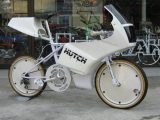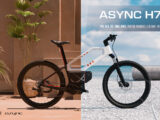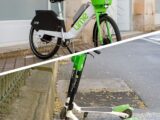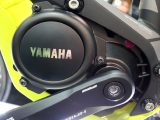
The ETT Trayser Is The Worlds First 3D Printed E-Bike!
December 6, 2017
New Zealand-based ETT has just announced their new Trayser electric bike, a $2,400 (£2,000) rigid-frame bike with an unconventional, futuristic-industrial look to it.
One of the most novel features of the bike is that its manufacturer has designed some 3D-printed parts and accessories including a cupholder, an iPhone mount, a speaker mount, and mudguards that you can order from Shapeways, a major 3D printing house.
Previously, the only experience I’d had with 3D printing and Shapeways was this disc brake adjustment tool, which is particularly helpful for adjusting disc brakes on electric bikes with rear hub motors, which don’t naturally have enough clearance to allow a 4mm or 5mm hex key to fit in the space between the hub motor and the disc brake calipers to make minor adjustments without completely removing the wheel from the frame/dropouts. 3D-printed parts are clearly useful for building simple tools, but how about for making custom mounts and custom parts?
One of the downsides of 3D-printing is that you don’t always have the choice of the strongest or lightest materials to work with. Often, you’re limited to easily printable plastics, which can be weak in certain use cases. If you choose 3D-printed metals, then your 3D-printing costs will be higher, and the printed part won’t be as strong as one that was made from forged steel or forged aluminum. In fact, the 3D-printed disc brake adjustment tool that I linked to above isn’t made from tool-grade steel, so you really have to be delicate with it and make sure that it doesn’t get its edges stripped.
The downsides of 3D printing mean that a plenty of bicycle components will continue to be off-limits for easy 3D printing at home, as they require more strength or lighter weight than 3D-printed products can provide, however, there are plenty of accessories and mounts that don’t require so much strength or lightness, so 3D printing those items make a lot of sense, especially for accessories that would sell in low volumes. The fact that a bike maker like ETT has embraced 3D printing bodes well for 3D-printed accessories in the future.









